Do you need to Pack for Cold Climates?
Whether you are planning to travel to a destination that is known to be cold or not. It has been our experience to have some items packed for cold climates as a precaution. We always include these items when planning and budgeting for a trip just incase they are needed.
Additionally, we have found it best to check the area’s average temperature and weather during our planning. A visit to the World Meteorological Organisation (WMO) during your initial planning gives you an idea of the average temperatures. Here you will be able to search the World Weather Information Service for official forecasts of the town or country you are visiting.
This information will give you an indication if you have to completely pack for cold climate. Or whether you can mix and match between lightweight and heavyweight items.
Our Travel checklists have options for you to pack for cold climates and hot climates. Additionally we have guidance on how much to pack depending on the length of your stay. I have found this so useful as I am not a born minimalist packer, I have to work at it.
This post may contain affiliate links, which means we may receive a commission, at no extra cost to you, if you make a purchase through a link. Please see our full disclosure for further information.
Preview – 7 Essential Items to Pack for Cold Climate Destinations
This preview briefly highlights and leads you through our 7 Essentials to Pack for Cold Climate Destinations. It has been our experience when travelling to cold climate destinations the need to include some or all of these items when you pack. This way you will be well covered for anything weather you may come in contact with during your travels.
- Base Layers – a selection of items that can be used for your base layers
- Outer Layers – brief overview, of items that are included in the outer layer category
- Beanie, Socks, Scarf and Gloves – items that cover extreme points of the body offering extra warmth
- Walking/Hiking Shoes or Boots – summary of the reasons good footwear helps repel the cold
- Sunscreen and Sunglasses – an overview as to why these items be included when you pack for cold weather
- Weatherproof Day Pack – summary on the advantages of adding this when travelling in cold climates
- Waterproof pouches or dry bags – a summary of how these can be useful for cold weather
Base Layers
When you are travelling to a destination known for a cold climate. One of the most important thing to add when you pack is layers. This has to be one of the biggest lessons I have learnt from living in Tasmania, Australia.
I have found even in warmer months at a cold climate destination the mornings can have a chill to them. It is also why we always pack for hot and cold weather, now wherever we go.
Base layers come in different forms and I have added here three we always pack for cold climates.
Note: whilst all the styles noted below are available in natural and synthetic fibre. Based on our experience we have found natural fibre products offer better protection in cold climates and what we recommend.
Base 1
A singlet/tank top when we know the climate are going to go to will be extremely cold. My choice is merino, cotton or bamboo to offer extra for any chill factor.
Additionally, I like these as a base layer packing for a warmer climate, under a light shirt.
Base 2
We include a t-shirt or undershirt, tights or thermal leg coverings when we pack for cold climates. These are usually thermal when expecting extremely cold weather. We have found merino and merino blends the best. However, other synthetic thermal materials offer a good base layer, though for me personally they don’t breathe as well as natural. For milder climates and warm weather we have found that cotton or bamboo are sufficient.
Base 3
Long sleeve t-shirts or button down shirts are our third base layer we pack for cold climates. These offer full upper body protection against the elements you may experience when travelling to cold climate destinations. Once again we love natural products and go for merino and merino blends, though synthetic materials offer great protection for this top base layer.
Tip 1: We mix and match one, two or all of the above depending on the extremes that may greet us.
Tip 2: Our Travel Checklists offers a printable packing list for cold weather. Additionally, they have guidance as to what quantities to pack for cold climates (winter destinations).
Outer Layers
Outer layers are definitely items to pack for cold climate destinations. These provide protection from any and all elements that may greet you.
Whilst I am concious of the clothing we now wear to ensure it is natural. With one of the outer layers this was a challenge for me in the past. I have found that a few of the brands we utilise are making a considerable effort towards making more sustainable products.
On researching for this article I have also found a site Conscious Fashion Collective. That offers a platform dedicated to supporting a socially and ecologically responsible fashion industry. Providing guides to sustainable raincoats etc of which one of the brands we use are among.
Outer 1
Our first outer layer consists of heavy cotton (twill) button down shirt or/and a good quality woollen jumper (sweater). From experience we have found a good quality wool (merino/cashmere or cashmere) offers superior protection. These jumpers can also be extremely lightweight and easy to pack for cold climates.
Products that are good substitute for wool, include Thinsulate microfibre and Polartec®. The Patagonia brand also offer a variety of options in organic and recycled materials.
Note: Whilst these may appear an expensive outlay, we find that they last for two-three seasons.
Outer 2
Next we cover for the extremes of outdoors with a good quality jacket. Our preferred layer for this is wool, that said we also have down jackets that we believe are sourced responsibly.
Whilst natural fibres have been our choice, looking at more sustainable, cruelty free options is becoming more on our radar. Thinsulate, Plumtech (used by Save the Duck), and Thermoball (available from The North Face) as stated in FashionBeans are all high-performing, cruelty free insulators.
Several of these options are lightweight also, which can be a premium concern when you pack for cold climates.
Outer 3
The third outer layer is all about rain and snow protection. This can be in the form of a jacket that incorporates two outer layers in one jacket that zip together. It’s been our experience that this style of jacket has many advantages especially when moving between climates.
Alternatively, a separate jacket that protects from the wet elements. Either way it’s been our experience whether we are in Europe in winter or autumn (fall) in Queensland, Australia. A good wet weather jacket is a must pack for cold climates and some warm. That said rain in Queensland is like a warm shower compared to Tasmania, Amsterdam or London ha ha.
Tip 3: It is our practice to carry or wear our larger coats onto the plane and store once on board.
Beanies, Scarves, Socks and Gloves
Having items that cover the extreme points of your body, are definitely essentials to include when you pack for cold climate destinations. It’s amazing how much warmer you become when covering your head, feet, neck and hands. I consider these cold weather essentials.
It’s been my experience that even just having one of these items can reduce the cold feelings. As an example, I always pack or wear a good scarf and beanie when the wind is blowing. This has helped immensely in keeping my whole body warm.
There are plenty of materials around now that will keep you warm. When looking at natural we always choose merino wool or recycled wool. Alternatively, we have found Thinsulate, Polartec and SealSkinz to be a fantastic alternate options.
For us these are definitely a ‘don’t’ leave home without them, when we pack for cold climates.
Walking/Hiking Shoes or Boots
Good comfortable shoes/boots are undeniably a must for to pack for cold climates or any climate. Especially if you intend doing a lot of walking.
Whether that be climbing 1,000+ steps to see a temple or the like, exploring a forest, mountain. Even wandering about the streets looking at sites, a bargain, searching out restaurant, entertainment or bar.
We tend spend a LOT of our time walking at whatever destination we find ourselves, including cold climates. So we speak from experience when we say that shoes are extremely important.
That said like jackets, these can weigh a lot and we tend to wear onboard. I have never been what could be classed a minimalist packer though getting better with our checklists. I have often packed more shoes/boots than needed.
However, on our last trip whilst ‘YES’ I packed more than needed I can say I have found my perfect boot. They are fancy, so I could wear it with a dress but durable and lightly lined. With tights these kept my feet warm during any of our wanders. as you may be able to tell shoes are a favourite thing to me.
Whilst Greg goes more for practical, no nonsense, non slip and comfy…
Whilst I am not married to any brand I can say from experience Sorel and Merrell offer wonderful options of extremely high quality. If you are anything like us comfort and quality are paramount.
Tip 4: Always have good quality products to cover the extreme points of your body. (Head, hands, feet and neck)
Suncreen and Sunglasses
When travelling to an area that has cold weather, including snow. Don’t be fooled, that cold weather means no sun or the damage it can cause to your skin.
Even in the snow sunscreen and sunglasses are essential protect from the glare and reflection of the sun. That can result in damage to your skin and eyes.
On our last trip to Europe we experienced just that having to purchase sunscreen and sunglasses for Greg. Due to the glare from the snow on the mountains in Switzerland was quite strong. Thank goodness we include incidentals when planning our budget.
Whilst, we have our preferred brand of glasses and find them excellent, they are a top end brand. However, having a good set of polarized sunglasses and high SPF sunscreen when you pack for cold weather traveling will suffice.
Weatherproof Day Pack
Another essential item for us to pack for cold climates is a good quality day pack. These are great to store all your essential items, devices, snacks, water etc. It is our preference to have a back back as they are easy to carry for long distances.
Also be sure to check your sizing requirements is it just for one, two or the whole family. Another factor to look at are they comfortable as someone may be wearing it for the day. Alternatively, there are good quality waterproof covers that may be sufficient with an existing backpack.
We are just researching to purchase a new weatherproof back pack as we have had many an accident with a normal day pack (backpack). There are two brands that stand out to us on quality Sea to Summit and Overboard. This will have the dual purpose of a back pack whilst kayaking for us.
Further to this our acts as one of our carry on bags when flying. So we always get the larger size to fit everything on the carry on the checklist.
Tip 5: If you are doing a lot around the ocean or snow exploring we recommend a weatherproof back pack or dry bag.
Waterproof Pouches and Dry Bag
Waterproof pouches a great way to not only keep your devices dry but any day snacks that you want to take along. You can find pouches in many sizes and shapes, they are great for so many things. We always have a variety of sizes and shapes when we pack for cold climate destinations so everything stays safe and dry.
Additionally, I opt for reusable pouches so we don’t leave any rubbish behind. These are also great for left over food when travelling and help minimise food wastage.
Packing
Adding bulky items such as those needed to pack for cold climate destinations into your packing can be a challenge. This is especially true if travelling with carry on only. We are currently writing an article on Conquering the Art of Packing, where I will be addressing in full how to pack for cold climates in a carry on.
However, for now I will leave you with what has worked for us on past trips. We pack at least one change of cold climate clothes in our carry on. Wearing our larger coats and shoes/boots onto the plane.
Other Articles to help with your Travel Planning
6 Steps to Create YOUR perfect Itinerary
9 Tips for YOUR Perfect Travel Plan and Budget
The Points or Pay system when Travelling





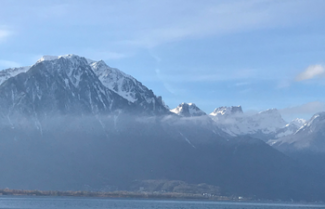

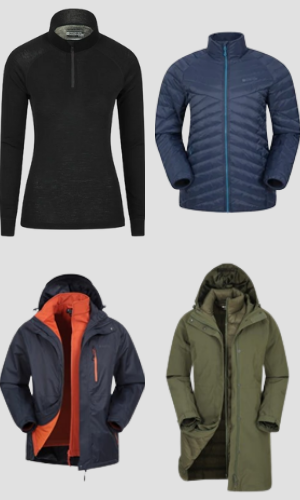
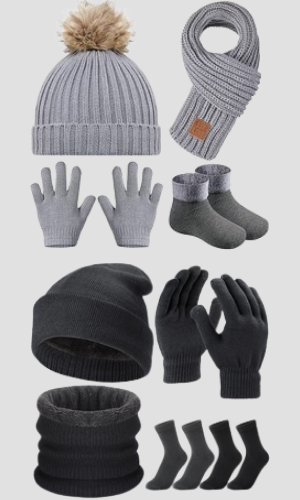
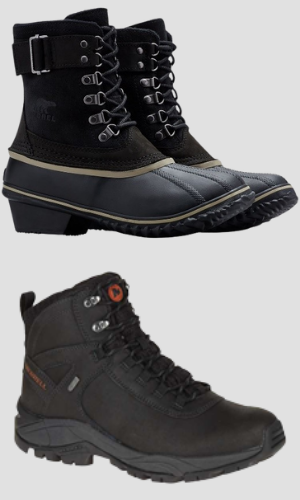

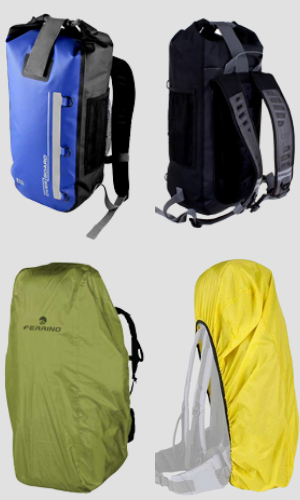
These are really important stuff, which some people never really consider when traveling to colder countries. For me, heated pads for my hands and feet are also a must as my extremities tend to freeze up faster.
Thank you and yes many don’t consider what is needed…I love that idea Head, Hands and Feet are the best to cover…
I love Merino wool too. Soft, warm, and odour resistant (great for those long days on the road where you can only do laundry once a week!). Last year I learned about heated gloves. I’m super sensitive to cold and my hands are always freezing. It makes a huge difference!
Oh I am also I will have to look at heated gloves also, thank you
I love your tips. It’s very important to pack right for a cold climate. Freezing is not the best thing to experience while travelling. Thanks for sharing!
Thank you glad you liked and correct it isn’t or even deep chill for me…
Great list! I always add a few extra pairs of socks. Nothing worse than cold feet after a day hiking!
Thank you…ohhh yes I know that well and it’s horrid
Great guide! Coming from Scotland, we understand the importance of packing for Cold Climate Destinations!
Thank you…ahhh yes it would be a natural thing for you…
Excellent article! It’s awful when you’re freezing – thank you for sharing this.
Thank you…I know there is nothing to cut an activity short quicker than being chilled
Thank you for your article. I am headed to the cold weather from the south where we have hit the 100F already and had no idea how and what to bring. This is very helpful
I am so glad this helps you layer lots of layers is my advice
Being cold is AWFUL! I went to Florida last November – and nearly froze!! I had to put on my leggings, pjs, pants, only long sleeve shirt I had, a vest, a hoodie, and a windbreaker…and TWO pair of socks!!
I totally agree, it’s a horrid feeling and I am sorry Florida got that cold…which I never imagined…but now I always have some warm clothes packed…just in case
It is crazy to think that you are just heading into Winter. We are well into Spring and I am grateful Winter is in the past! Great list of essentials.
Thank you and yes it is crazy and it’s starting to get cold 20cm of snow an hour from us last week…it is a helpful guide if swapping Hemispheres…as we have done a few times
What a great packing list for cold weather! I’ll definitely refer back to it for my Iceland trip in October. Thank you for the recommendations!
Thank you…ha ha Iceland best add another layer…glad it was helpful for you
Excellent list — and thank you very much for including natural fabric options. (I am sensitive to synthetics and can’t use them.)
A natural fabric that gives a good punch in the insulating field is silk. I use a silk shirt as my first underlayer, and keep a large silk scarf in my jacket pocket to keep my neck and torso warm in emergencies.
Keeping extremities warm is super important, to prevent frostbite.
Thank you…I love natural fibres but I like to give alternatives and thank you…Silk is a favourite and very travel friendly I will add this…oh yes I agree extremities are very important..
Winter is coming in my country , it’s just what i needed thanks for sharing
Thank you and you’re welcome…Winter is coming here also, so I thought it a timely reminder for everyone…
Great post, very informative. I feel more prepared now than before, for my upcoming vacation. Looks like I need to go to Amazon now and order a few essentials. Thank you for sharing.
Jay | Eager Books
Thank you… so glad it helped, I hope you get some great bargains on your essentials…
All these are essentials in a Canadian winter hahaha I would also add toes and hands warmers! They helped me enjoy the winter so much more!
Thank you… Yes I agree definitely essential for Canadian winters and great tips thanks for that I will add these I know being warm helps greatly in the enjoyment of cold climates.
This is excellent information. I’m from Georgia, and we don’t have very cold winters. My stepson just moved north, and we will often visit him. These are things I probably won’t think about packing. Thank you for sharing.
thank you…I am so glad this has helped you and enjoy your visits, being warm in cold climates makes the trips more enjoyable.
Great list! We always find ourselves grossly unprepared for cold weather destinations.
Thank you…we often forget some things but have got so much better after 10+yrs of travel
This is a great guide! Not everyone is traveling only to warm Mallorca and Mexico! People are also traveling to the Norwegian mountains and Canada and it’s so important to be ready for the cold weather! As I am coming from a cold country, I know what it means!
Isn’t that so and in the Southern Hemisphere we are going into winter …need to check the packing
very helpful as I live in the tropic, cant wait to pack again and travel in a cold place
ow what you mean I think we may cross over into winter next trip to Europe but not sure…
I so wish I had read this before my week on the East Coast. I live in the South thus always warm and when you are not used to cold, you really are cold.
Great tips and will share this with my son as he will be moving to the cold weather this coming fall.
Sorry but you have it now, and there is cold and then there is colder… thank you for sharing
Yes! Layers are key to making sure your comfortable. Temperatures can be deceiving! On a sunny day, it may feel way warmer than the temps show. But if there’s wind, you’re going to want to get those layers back on!
I know the first year in Tasmania I froze… but even though it was cold, layers would have fixed that… oh yes the wind can be brutal in the cold…
Definitely agree on the sunglasses and sunscreen! I find that I need both year round, even when the weather is cold.
Exactly, we don’t leave home without either no matter what the weather.
I love how you include sunscreen and sunglasses in this list. I think many people do not think about the strength of the sun in snowy regions and high altitudes. Sunburn is a real possibility there. Great and comprehensive list all together!
Thank you… I agree and it’s something I learnt (from son and his snow tan/burn) that people burn in cold also…and protecting eyes against glare is essential also…but I know you know this…
This would have been useful for our camping trip this past weekend. the weather was so cold in our tents at night, it was so hard to keep warm. I will try some of these tips next time we go out.
Yes it would be friends of ours that camp say they sleep in beanies… haha…
This is a great post! We often venture to the cottage during the winter to do some ice fishing and layers are so important when we dress. It’s great to be able to take layers off if we get too hot. Sweat and cold weather do not mix.
hmm Ice Fishing not sure I’d have enough layers for that…ha ha but yes that is the best thing about layers. you can always take one off.
As someone from the warm south, this is an incredibly useful post. I remember being at a loss for what to pack on my first winter trip to Europe. Saving this for the future.
Ha Ha yes I remember our first trip to Europe in Spring, still required me going shopping for a sweater
Awesome list of stuff we need for cold. We have a couple of things on the list, but these look nice too. Thank you for sharing!
Thank you…it’s how we live now…layer – layer – layer
Fantastic article I’m such a fan…when ever people say it’s cold in Tassie…I say it’s all about layering. I grew up in Tassie and even then I’m nearly 66 years young..it was singlet, long sleeves in winter, tshirt, flannette shirt, jumper usually home made woollen then coat, hat and scarf…so love your article ❤
Thank You and it is all about the layers… and we could be in for a cold one this year but the fire isn’t on yet so who knows
These are all essential where I live in the northern US during the winter. It can be brutal, but it can be a beautiful experience when properly prepared. Thank you for sharing this fantastic list of cold climate essentials!
You’re welcom and I totally agree the right layers can be the difference between good and bad time outdoors…